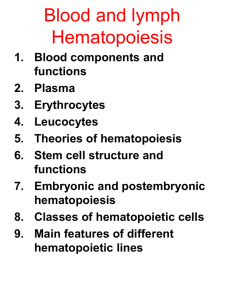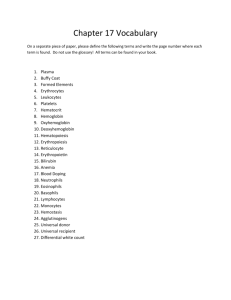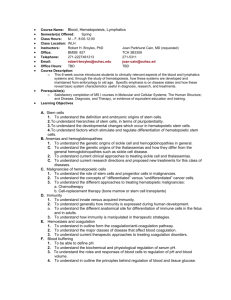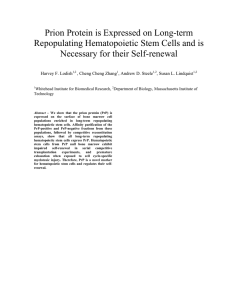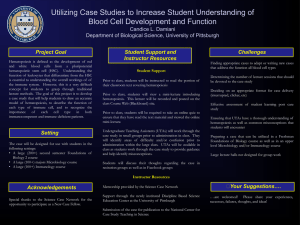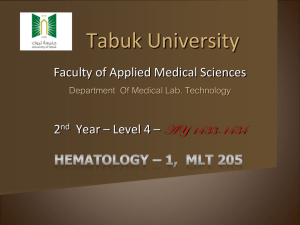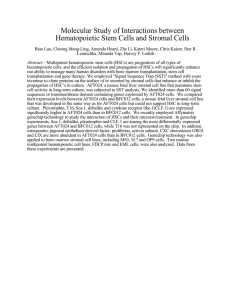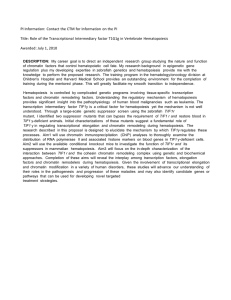blood cells and plasma
advertisement
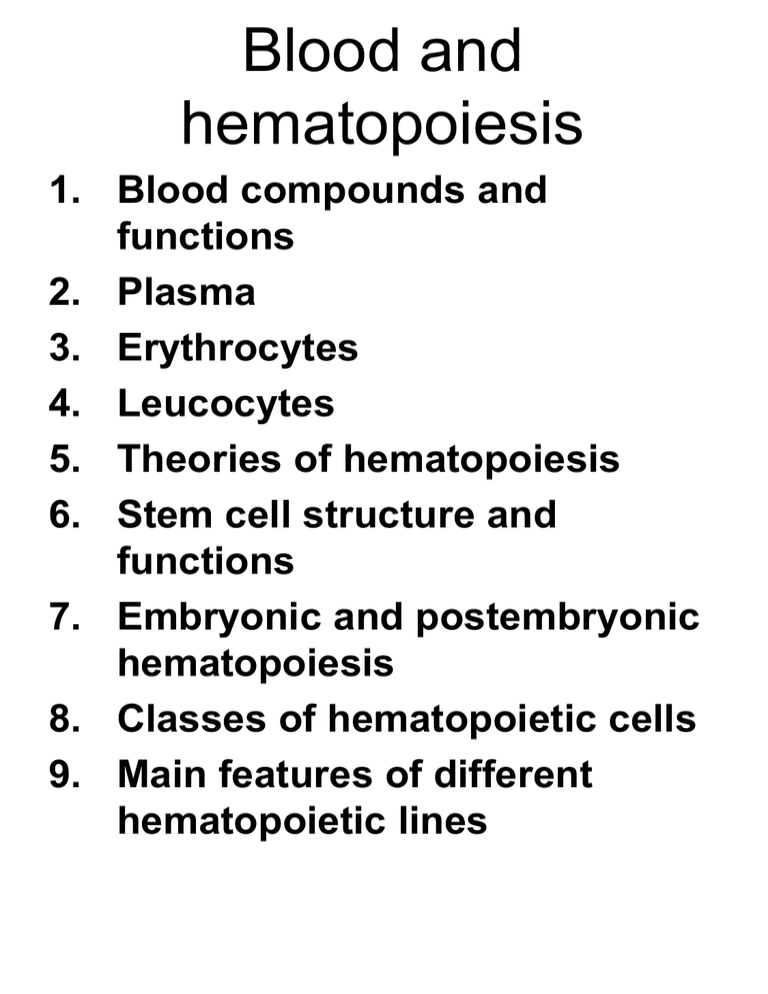
Blood and hematopoiesis 1. Blood compounds and functions 2. Plasma 3. Erythrocytes 4. Leucocytes 5. Theories of hematopoiesis 6. Stem cell structure and functions 7. Embryonic and postembryonic hematopoiesis 8. Classes of hematopoietic cells 9. Main features of different hematopoietic lines Blood=cells + plasma (RBC+WBC+PL) Leucocytes eosinophil • Functions • • • • • • 1. Trophic 2. Respiration 3. Protection 4. Excretion 5. Homeostatic 6. Transport HEMATOPOIESIS – blood compounds development (blood cells and plasma) THEORIES OF HEMATOPOIESIS • POLYPHYLETIC THEORY – each mature blood cell type is derived from its own distinct stem cell • MONOPHYLETIC THEORY (A.A. Maximov) – there is one stem cell, which can form all the mature blood cells types. • Multipotential stem cell (CFU-S – colony-formingunit of spleen) Hematopoietic stem cell Differences between embryonic and postembryonic hematopoiesis embryonic postembryonic Histogenesis of blood Blood physiologic regeneration Extracorporal (extraembryonic) Intracorporal Intravascular Extravascular Occurs in different organs Megaloblastic erythropoiesis mesoblastic RBM Normoblastic CLASSES OF HEMATOPOIETIC CELLS • I class – polipotent (pluripotent) stem cell. • II class – hemistem cells for lymphocytopoiesis and myelopoiesis. • III class – unipotent cell (committed) sensitive to exact hemopoietin (erythropoietin, leykopoietin, thrombopoietin). • IV class – blasts (young actively dividing cells). • V class – maturing cells. • VI class – an “adult” mature cells in peripheral blood. ERYTHROPOIESIS 1. Decrease in cell size (from 20 till 8 мm) 2. Ejection (extrusion) of the nucleus 3. Accumulation of hemoglobin in the cytoplasm 4. Basophily decrease and acidophily increase GRANULOCYTOPOIESIS GRANULOCYTOPOIESIS • 1. Decrease in the cell size • 2. Chromatin condensation • 3. Changes in nuclear shape (flattening – indentation – lobulation). • 4. Accumulation of cytoplasmic granules. LYMPHOCYTOPOIESIS LYMPHOCYTOPOIESIS • 1. Begins in red bone marrow and then continues in lymphoid tissue. • 2. Lifespan various in different types of lymphocytes. • 3. Antigenindependent development – in the central hematopoietic organs (red bone marrow and thymus) and antigendependent – in peripheral ones (spleen, lymph nodes and nodules). MONOCYTOPOIESIS • 1. Decrease in cell diameter. • 2. Decrease in nuclear diameter. • 3. Cytoplasm basophily decreases. • 4. Nucleus changes its shape from round to kidneylike MONOCYTOPOIESIS Megakaryocyte
